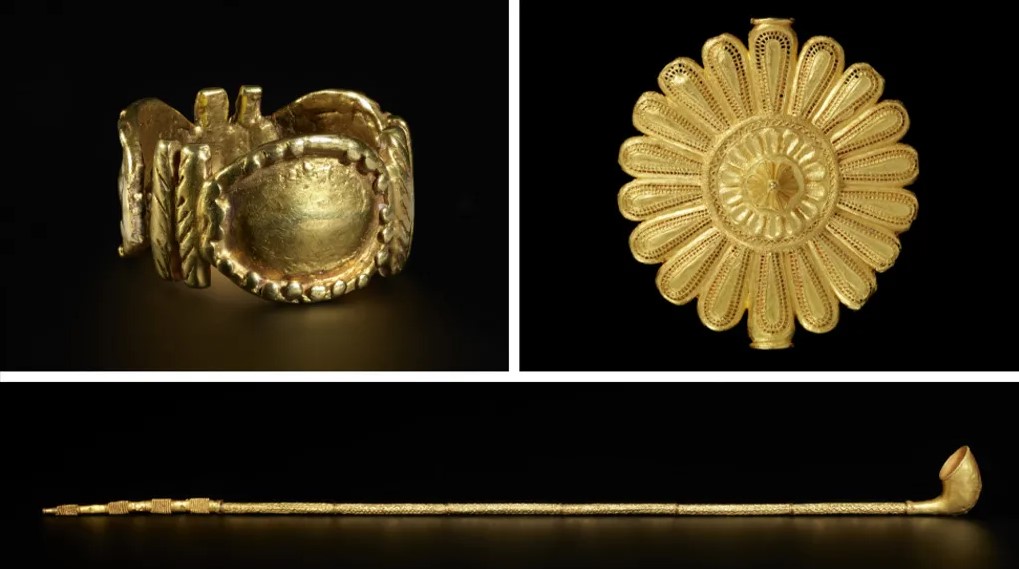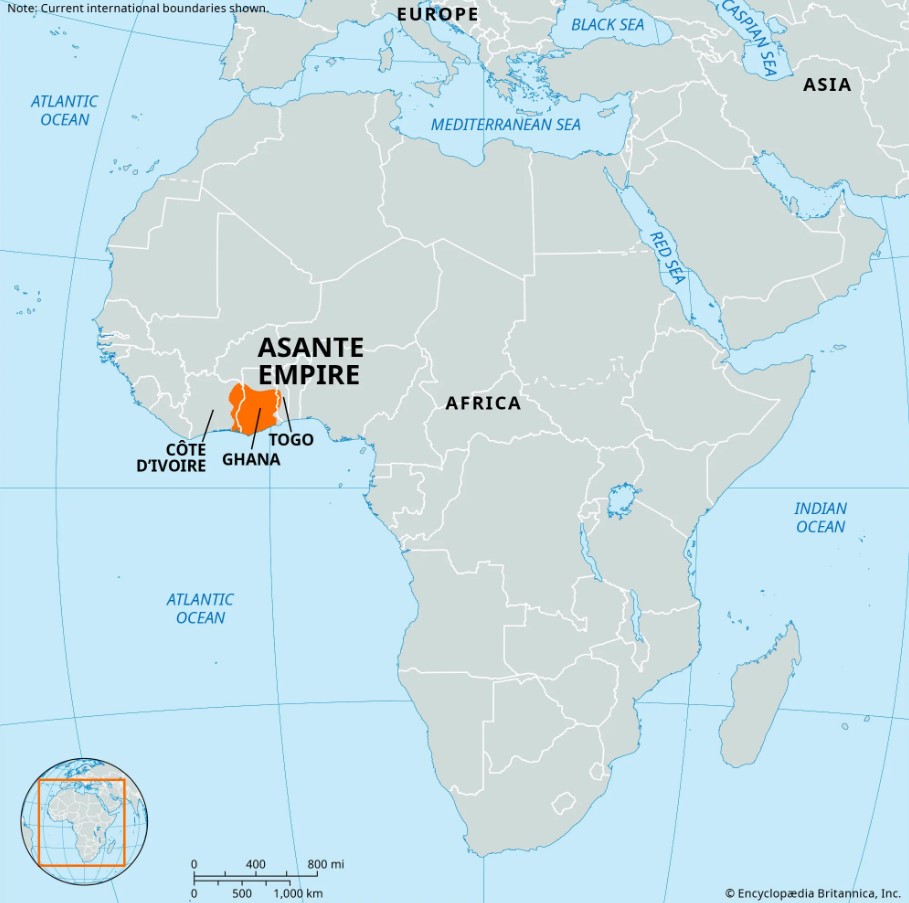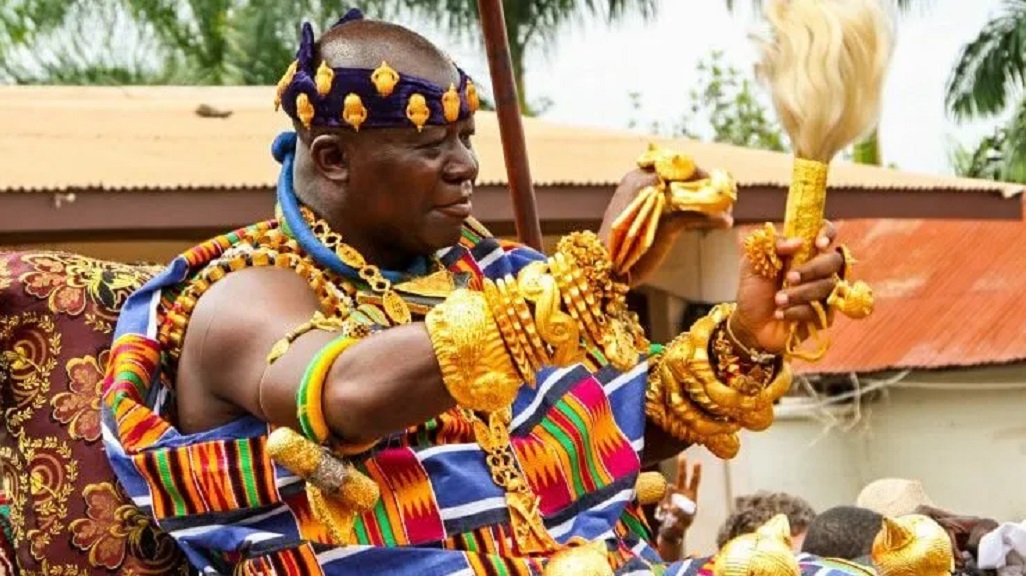Two UK museums have returned a number of different Asante royal artifacts to Ghana, in a deal with the traditional leader of the Asante people. Included in the return are some of the Ashanti Empire’s crown jewels. The return marks the first time in 150 years that these artefacts have been seen in Ghana, the post-colonial successor of the Ashanti Empire.
A Temporary Return
In January of 2024 a deal was signed between the UK’s British Museum, Victoria & Albert Museum, as well as the Manhyia Palace Museum in Ghana, and Otumfuo Osei Tutu II, the present traditional ruler of the Asante. The deal facilitated the return of a number of different Ashanti Empire royal artefacts from the two UK museums to Ghana’s museum.

While the return is being celebrated as a step of progress, within everyone’s minds is that the move is only temporary, and the artefacts will have to be returned back to the UK.
According to UK law, artefacts within the British Museum (and associated museums) cannot be returned to their country of origin.
As such, the artefacts that have been returned are only on loan for three years, which is renewable only once for another three years.
In total, 32 objects were returned, 15 of which came from the British Museum, with the remaining 17 coming from the Victoria & Albert Museum.
Otumfruo Osei Tutu II is to receive the objects, before they are transferred to the Manhyia Palace Museum in Kumasi, Ghana. The museum will then be closed for approximately three weeks, in order to install the artefacts into the museum and ensure their proper protection. The museum will be opened again for the public to view the returned artefacts in May.
According to UK Law
As stated, the UK’s law prohibits the permanent return of artefacts to their country of origin. The British Museum Act of 1963 states as follows:
(1)The Trustees of the British Museum may sell, exchange, give away or otherwise dispose of any object vested in them and comprised in their collections if—
(a)the object is a duplicate of another such object, or
(b)the object appears to the Trustees to have been made not earlier than the year 1850, and substantially consists of printed matter of which a copy made by photography or a process akin to photography is held by the Trustees, or
(c)in the opinion of the Trustees the object is unfit to be retained in the collections of the Museum and can be disposed of without detriment to the interests of students:
Provided that where an object has become vested in the Trustees by virtue of a gift or bequest the powers conferred by this subsection shall not be exercisable as respects that object in a manner inconsistent with any condition attached to the gift or bequest.
(2)The Trustees may destroy or otherwise dispose of any object vested in them and comprised in their collections if satisfied that it has become useless for the purposes of the Museum by reason of damage, physical deterioration, or infestation by destructive organisms.
The act does not prohibit, however, the “lending” of objects from the museum’s collections, under certain circumstances. The act states as follows:
The Trustees of the British Museum may lend for public exhibition (whether in the United Kingdom or elsewhere) any object comprised in the collections of the Museum:
Provided that in deciding whether or not to lend any such object, and in determining the time for which, and the conditions subject to which, any such object is to be lent, the Trustees shall have regard to the interests of students and other persons visiting the Museum, to the physical condition and degree of rarity of the object in question, and to any risks to which it is likely to be exposed.
The clause which permits the museum to “lend” objects was used to facilitate the deal.
A Product of Colonization
The majority of the UK’s collection of Asante artefacts were looted during the Anglo-Asante wars of 1873-74 and 1895-96. The items that have been returned were looted in the first Anglo-Asante war, and purchased by the Victoria & Albert Museum in an auction in 1874.

The British Museum itself estimates it holds 239 Asante regalia items in its collection. This is a mere fraction of the total Asante items held by both other museums in the UK, as well as around the world.
The British Museum has long been subject to criticism over the vast amount of foreign artifacts it holds in its collections. In total, the British Museum has a collection of over 8 million items, of which the vast majority are estimated to originate from outside the UK.
Of these items, a significant number come from British colonial conquests, both in Africa and around the world. A number of European countries have also requested items within the UK’s collection to be returned to them, which has routinely been denied.
As time has gone on, and efforts are made to examine and reconcile Europe’s colonial history, many of the nations which were former colonies of the UK have requested their relics back from the UK.
The UK’s refusal to return artifacts has led to political tension between them and a number of other nations, who accuse the UK of stealing the artefacts from them. In May of 2023, the UK refused to return to Ethiopia the remains of an Ethiopian prince, Prince Dejatch Alemayehu of Abyssinia, who was orphaned during a UK war with Abyssinia in 1868. The Prince was taken back to the UK, where he died due to pleurisy. Ethiopia has made several requests for the return of the prince’s remains, all of which have been routinely denied.
The return of the artefacts has been met with mixed reactions in Ghana. While many are happy to see the artefacts back in the nation for the first time in 150 years, many are also critical of the fact that the return is only temporary.
When the deal was signed, Nana Oforiatta Ayim, a special advisor to the Minister of Culture in Ghana, said that the loan is a “starting point,” but has called for the proper return of the artefacts held by the UK.
“I’ll give an analogy, if somebody came into your house and ransacked it and stole objects and then kept them in their house, and then a few years later said, ‘You know what, I’ll lend you your objects back,’ how would you feel about that?” -Nana Oforiatta Ayim

